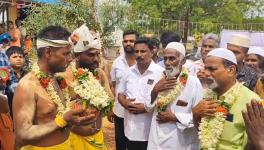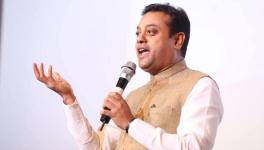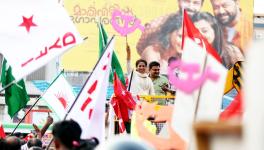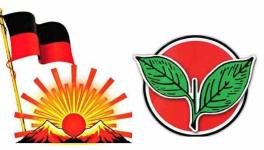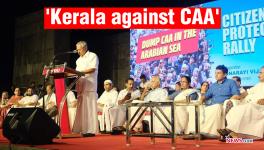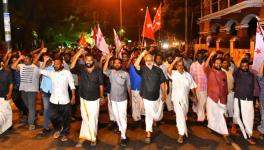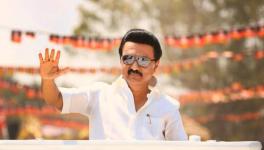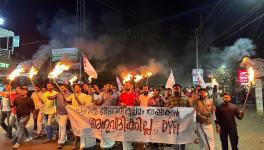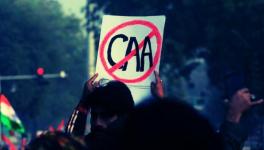Call for Fighting Divisive Forces on Vaikom Satyagraha Centenary Celebrations
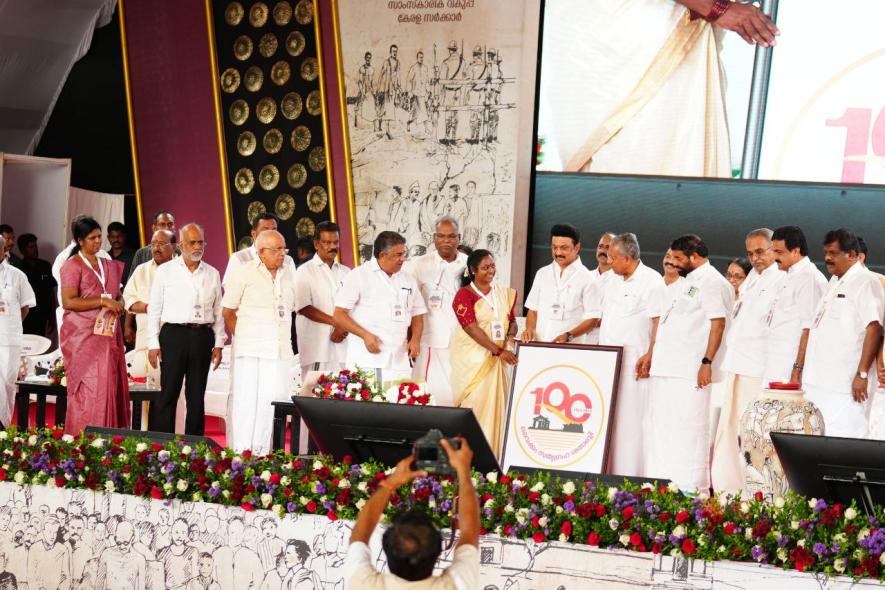
Kerala CM Pinarayi Vijayan and his Tamil Nadu counterpart MK Stalin release the logo of the centenary celebrations of the Vaikom Struggle. (Image: J Jessin).
Kerala chief minister (CM) Pinarayi Vijayan and his Tamil Nadu counterpart MK Stalin have called upon people and parties to unitedly fight against communal forces damaging the country’s religious harmony and diversity by pointing to the century-old Vaikom Satyagraha.
The non-violent temple street entry movement was organised in Kottayam against the denial of permission to Ezhava and Pulayar communities from using public roads. People and leaders from diverse religious and caste groups had fought together for 19 months to win the right of the oppressed.
Kerala will celebrate the movement for its duration of 603 days from March 30, 1924, to November 23, 1925, by organising seminars, exhibitions and lectures highlighting the role played by different leaders, including Periyar EV Ramasamy.
Jointly inaugurating the centenary celebration of the struggle on April 1 with Stalin, Vijayan said, “The Vaikom Satyagraha projected the model of united struggle against oppression. The people of Tamil Nadu and Kerala stood together in the struggle.” The togetherness and brotherhood will be a model for the nation to emulate, he added.
Echoing similar views, Stalin said, “We have overcome several oppressions due to the Sanatana rules in the past. It is high time we explain to the younger generation and educate them about dharma as right-wing parties are trying to re-establish Sanatana-varna-communal principles. We are duty bound to defeat such divisive policies.”
Kerala culture minister Saji Cherian said, “The first three persons to break the rule and walk on the road around the temple were Kunjapi, Bahuleyan and Govinda Paniker—all belonging to different caste group”.
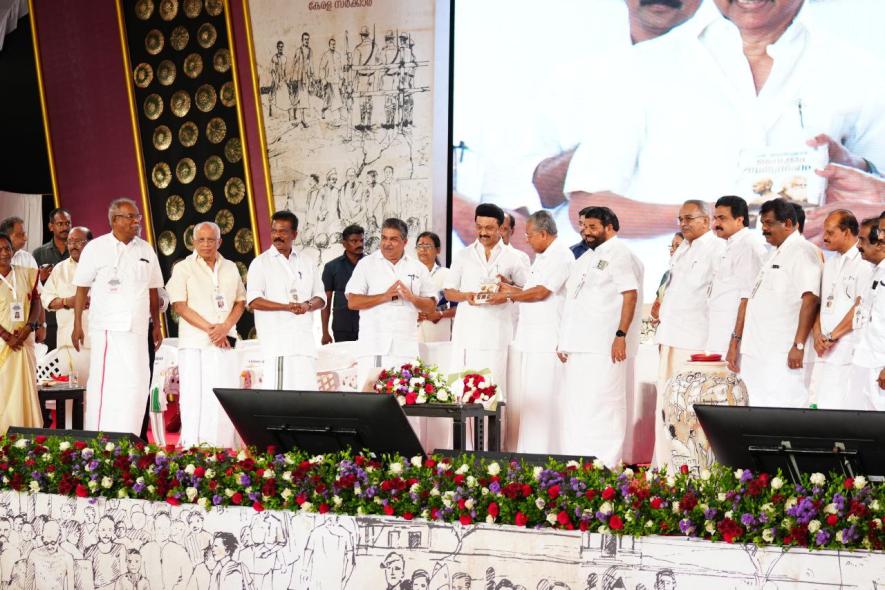
Pinarayi Vijayan and MK Stalin release a book translated from Tamil to Malayalam on the role of Periyar in the Vaikom Struggle (Image: J Jessin).
Reminding people about the unity of different castes and religious groups in fighting oppression, Vijayan said, “The struggle also witnessed the role of Sikh brothers who came from Punjab to set up a kitchen during the struggle. The Vaikom Satyagraha remains a testimony of victory through united struggles.”
The leaders recalled the proactive role played by social reformer Sree Narayana Guru, who collected and donated money to the struggle.
The Nair Service Society (NSS), under the leadership of Mannath Padmanabhan, organised a rally from Vaikom to Thiruvananthapuram.
The historic struggle was led by Congress leaders and social reformers from Kerala and Tamil Nadu, including Periyar, and supported by Guru.
The Namboothiris of the Indamthuruthi Mana, the custodians of the Vaikom Mahadeva Temple, didn’t allow Mahatma Gandhi inside their house and held talks with him outside on allowing the oppressed caste people from using public roads.
Following several protests in 1865, the Travancore princely state published an order permitting all castes to use public roads. However, the order was not implemented in several areas with dominant and upper-caste groups claiming that the presence of oppressed caste people would pollute others and the sanctity of temples.
Following an interaction with the Mahatma in 1921, the Anti-Untouchability Committee led by TK Madhavan, K Kelappan, KN Namboothiripad, TRK Iyer, AK Pillai, Hasan Koya and KPK Menon launched the struggle in on March 30, 1923.
Madhavan proposed a resolution at the Kakinada session of the Congress in 1921 seeking permission for people of all castes to use public roads, including those around the temple.
Upper-caste people had installed a board announcing that people from oppressed communities were banned from using the road around the temple.
When important leaders of the struggle were arrested and jailed, the committee invited Periyar, an important leader of the Congress Committee of Madras Presidency, to lead the struggle. He was arrested and jailed twice during, earning him the name ‘Vaikom Veerar’ (Hero of the Vaikom Struggle).
Get the latest reports & analysis with people's perspective on Protests, movements & deep analytical videos, discussions of the current affairs in your Telegram app. Subscribe to NewsClick's Telegram channel & get Real-Time updates on stories, as they get published on our website.









